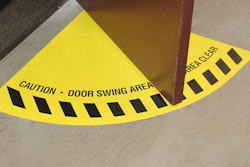As anyone who works in food manufacturing can attest, food products are at risk of attracting pests from the moment they sprout on a farm through the moment they are eaten. Where there’s an opportunity for pests to gain access to food, they will. As food moves throughout the supply chain, its condition and the conditions around it change in small ways and big ways, with each of these changes creating opportunities for different pests to enter the picture.
This is true of all food products, but to illustrate these changes, let’s follow the path a bag of potato chips takes from the moment the potatoes are harvested to the moment it leaves the warehouse for its retail destination. As we follow this path, we’ll examine the risk factors, most common pests and solutions for mitigating the risk of pest contamination at each step of the process.
For our purposes, the first step is when the potatoes are harvested in the field. Because they’re outdoors, they’re vulnerable to the elements and they’re exposed to rodents — especially to mice. Mice can get picked up with the potatoes in the field and they can gain access once the potatoes enter the storage facility, which is often located in a rural area where several species of mice are common. Mice exhibit curious feeding behavior, meaning they’ll search just about anywhere they can gain access to until they find a food source. Even if the storage facility inspects the incoming crop for mice, they may still gain access from outside the facility. Mice are able to squeeze through openings as small as a quarter of an inch, meaning storage facilities need to undergo vigilant maintenance and repair procedures to keep mice out. Those overseeing these facilities need to fill cracks, eliminate openings around pipes, install door sweeps and fit any pipes and ducts that lead outside with screens.
It’s important not to forget about the roof when considering maintenance needs. Roofs are often overlooked, but they can accumulate debris, which serves as harborage not only to mice, but also to birds and a variety of insects. Pipes and vents often enter the building through the roof, which means it creates an access point for pests to enter the building, as well. Maintenance of the storage building should include regular sweeps of the roof to eliminate debris and moisture, and to check openings such as vents for signs of pests.
Once potatoes leave the harvest stage, they typically enter the wash process, where they’re exposed to a new set of dangerous conditions. Wash facilities are always at risk of accumulating water, and debris can also build up around drainage areas, in/under equipment and along the edges of walls as loose organic material is removed from potatoes through the wash process. These conditions create breeding grounds, harborage and a food source for phorid flies. The combination of wet conditions and the buildup of debris shed from the potatoes can lead to decaying organic matter, which is exactly the type of condition in which phorid flies breed.
Again, installing items such as door sweeps and screen seals is an important step in keeping pests out of the facility. Additionally, air curtains above doors can help keep these flies out when people enter and exit the building. Most important, however, is a thorough sanitation program. All employees in the facility need to understand the crucial role they play in eliminating the conditions in which these flies thrive. Floors need to be cleared of debris and stagnant water. Drains need to be cleaned and inspected regularly to ensure decaying material doesn’t accumulate. Even small cracks in the floor or at the floor-wall junction can trap the material phorid flies need to breed, so regular inspection and structural maintenance are essential pieces of the puzzle.
After washing, potatoes enter the cooking stage, where they’re sliced up and cooked as the potato chips begin to take shape. The combination of steam and heat produced by the cooking process creates a humid environment where German cockroaches thrive. Incoming product needs to be thoroughly inspected for cockroaches. Again, cracks and crevices in floors, equipment and at the floor-wall juncture create breeding grounds for these pests, which have a very fast reproductive rate and can turn into a major problem in a short amount of time.
In addition to entering with incoming product and via cracks in the structure, cockroaches can also hitchhike into the building with employees’ personal items. To reduce the risk of any incoming pests making their way into production areas, a specific employee personal item storage area should be designated and enforced — a locker room, or at a minimum, a cubby area in a room isolated from production. Practice regular cleanouts of this area — monthly at a minimum — and be sure your pest management partner inspects and services the area during the cleanout.
The next stop along our journey is really two steps in one — dehydration and packaging. Because both steps involve the dried, flaky form we recognize as potato chips, they face similar risks. As the chips are dried and packaged, crumbs and flakes create a food dust where stored product insects — especially warehouse beetles — have all the food and breeding opportunity they need to multiply. These beetles are strong fliers and can spread quickly from one area to another. Their eggs can survive a long diapause period, meaning eggs laid when food is scarce can wait to hatch when a food source becomes available, so it’s important to perform constant maintenance to keep food dust from accumulating. Any surface, including floors, shelves, walls, exterior/interior of electrical boxes and the sides/tops food processing equipment creates an opportunity for food dust to gather, so it’s important to have a thorough maintenance procedure to prevent buildup throughout the facility. The trained eye of an experienced pest management professional can identify surfaces that are otherwise easy to overlook, making it necessary to have the facility inspected any time storage units or processing equipment is moved.
Your pest management partner should also install pheromone traps to detect populations of stored product insects in the facility. Installed strategically in areas these pests are likely to breed, the traps act as a monitoring device to detect growth in the number of insects throughout the facility, alerting the team to problem areas as soon as the beetle population begins to grow.
The last step before our bag of potato chips ships out to retail is warehouse storage. From the time the chips enter storage to the time they ship, they’re at risk from a number of pests, including both rodents and insects. Unlike the other steps in the process, it’s difficult to pinpoint one that poses the greatest threat, so warehouse managers need to be aware of the diverse risks and implement solutions that cover a broad variety of potential pests.
Protecting the warehouse environment requires a combination of all the measures previously discussed, including inspection of incoming product, diligent maintenance practices and the implementation of monitors/traps for both rodents and insects. Keeping the floor well-sealed, repairing cracks around pillars and the floor-wall juncture, and keeping drains clear of both debris and standing water are all critical in the warehouse. Any spilled food material needs to be cleaned up quickly and thoroughly. A pest management professional should conduct regular inspections to identify risk factors and suggest repairs and upgrades that minimize the risk of a pest problem.
Keeping on top of pest activity in all of these areas can be a complex process to manage, especially when multiple locations are involved. As you consider pest control providers, look for a partner that offers a pest control data management system that can help you track activity, produce FSMA-compliant reporting and manage recommendations for corrective actions across multiple facilities.
Throughout the process, from harvested potatoes to packaged chips, careful inspection and thorough maintenance are critical to managing the risks of pests contaminating the food product. Knowing the conditions that attract pests, management and staff at facilities throughout the manufacturing process can take steps to prevent an infestation, from cleaning up materials that act as food, harborage and breeding grounds, to repairing structural issues that provide hiding places and entry points. A detailed integrated pest management program, when executed properly, helps get those chips onto store shelves in exactly the condition we expect.
Tom Dobrinska is a board certified entomologist for Rentokil Steritech and an expert in pest management throughout food supply chain.






















